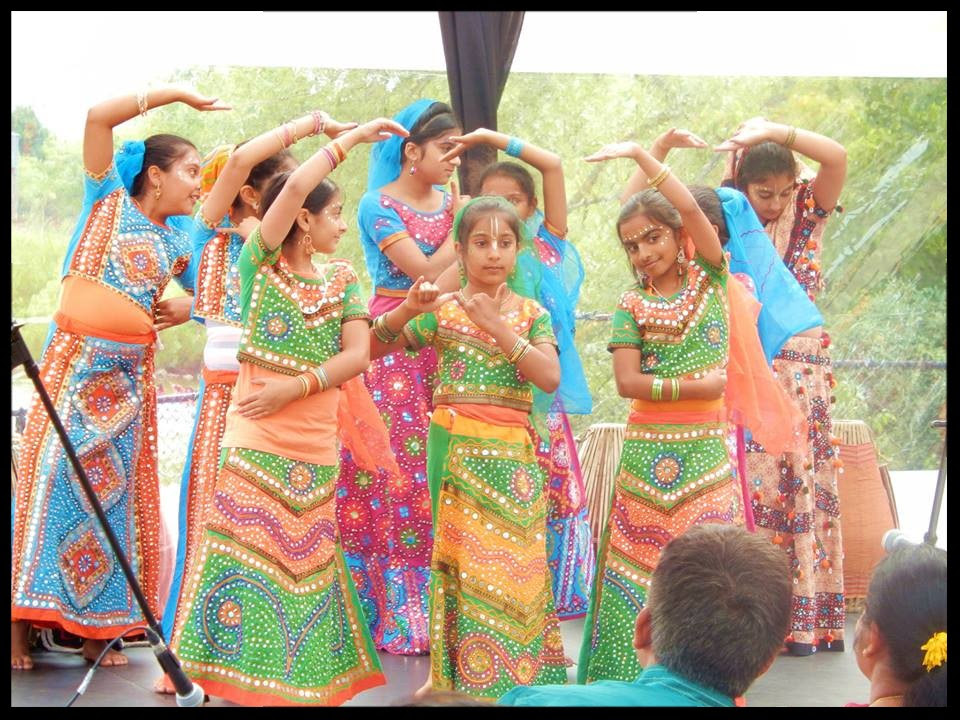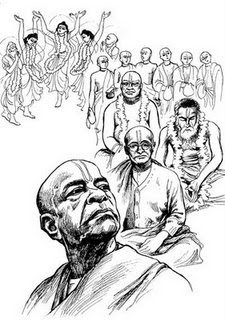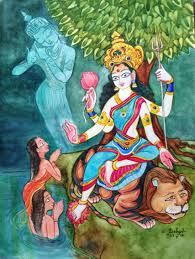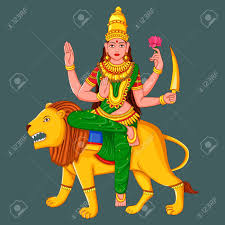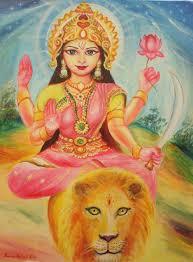Saturday, November 9th, 2019
Friday, November 8th, 2019
→ The Walking Monk
Thursday, November 7th, 2019
→ The Walking Monk
DELAND RETREAT
Bhakti Charu Swami
The perfection of Srila Prabhupada.
→ simple thoughts
Several years ago whilst sat in class the mataji who was a Srila Prabhupada disciple stated class by saying how her own Guru Maharaja in his purport had got it wrong and then presented her reasons why.
Forward to today and on several occasions I’ve been asked if I could comment on if Srila Prabhupada is perfect which is always one question I try to avoid given the complexities of the answer. It’s one that is dependent on the individuals understanding and also the definition of perfection and how do you present this.
The last class I gave which was a while ago I mentioned how if we want to find faults in any devotee it is there, we are after all individuals in a material body which makes us all imperfect. so the notion of not finding fault is inaccurate and this is why over the years ISKCON and devotees have had pages and journals written on the imperfections and summary as to why both shouldn’t be followed.
Indeed Srila Prabhupada has many such controversies from family life and the age his wife was when they were married. The comments on women and rape to others that can be read as racist. So the definition of perfect could be seen as misplaced, as with all of us imperfections can be found.
So why follow?
At the end of the class the mataji presented I was left wondering if this small purport in her mind is inaccurate then how much more could be seen as accurate. After all if the writer is imperfect then surely the purports are imperfect this could be seen as a natural conclusion and tested could be seen as accurate.
However this doesn’t take into account that actually each one of us are indeed imperfect and also impose our own understanding and perceptions, indeed I felt that the mataji did what many of us do when giving class present our own version of what we feel is being said. Analogy if words and sentences is indeed subjective to the reader and we are all products of upbringing and the environment and society we are raised in.
Srila Prabhupada was a product of being raised in India in a particular generation and this can be seen in some of the purports and life choices. But we miss the real understanding of perfection; Sri Krishna.
Srila Prabhupada was absorbed in love of Krishna and took the words of his own Guru Maharaja seriously, but took this in my opinion one stage further. Instead of writing and presenting love of Krishna in English but then came to the west to give this directly to those who were open to listen. Many themselves despite their own imperfections took this seriously and have gone about carrying on the mission Srila Prabhupada stated in giving love of Krishna, and yes it is easy to find fault this I can 100% guarantee.
But reflect on the undertaking Srila Prabhupada wrote, instructed and guided he gave all he could to spread the love he had for Krishna to each and every individual he met, and we can absorb ourselves constantly in this not only in written format but by the fact many classes were recorded on either tape or super8.
Perfection in Imperfection
We are like Srila Prabhupada in a material body and under the influence one way or another by material nature, the more we become absorbed in love of Krishna the less material nature influences us but it will never be 0% until one returns to the spiritual world.
So we become full of compassion for the fallen conditioned souls
Understanding that faults will be there, we are products of so many influences that can bring us into conflict of misunderstanding. But each is perfect in as much as the devotee’s are trying their best to become absorbed in love of krishna, each at various levels from full absorbed to well maybe a few minutes each day.
All is good.
And few will be as absorbed in love of Krishna and love of the fallen conditioned souls as Srila Prabhupada so in conclusion our founder acharia in this definition is perfect if we accept love of Krishna is the perfection of life.
And this is indeed one of the higher thoughts Srila Prabhupada spoke about seeing each devotee as perfect, for each individual is as we are trying to love Sri Krishna whilst dealing with our mind and imperfections brought about by being in a material body.
Children’s Ratha Yatra – Sun 24th Nov 1:00pm
→ The Hare Krishna Movement New Zealand
Jaipur Adventures – part 3 – Braja Parikrama 2019
→ KKSBlog

Written by Rukmiṇī Devī Dāsī
A God Who Dances – Rādhā Gopīnātha
śrīmān rāsa-rasārambhī
vaṁśīvaṭa-taṭa-sthitaḥ
karṣan veṇu-svanair gopīr
gopī-nāthaḥ śriye ’stu naḥ
“Śrī Śrīla Gopīnātha, who originated the transcendental mellow of the rāsa dance, stands on the shore in Vaṁśīvaṭa and attracts the attention of the cowherd damsels with the sound of His celebrated flute. May they all confer upon us their benediction.” (Śrī Caitanya-caritāmṛta Ādi-līlā 1.17)
“The reason we have come here is not for a far-out experience but we are at the very core of the teachings of the Caitanya-caritāmṛta which is the essence of our spiritual life. You can understand that I have planned this parikramā this year with these three Deities (Madana-mohana, Govindajī and Gopīnātha) at the centre. Lord Caitanya has arranged for these three Deities to appear in this world in order to flood it with mercy… In the Rādhā Gopīnātha temple, that flood of love has been stored.”
On our last night in Jaipur we found ourselves at the lotus feet of Śrī Śrī Rādhā Gopīnātha. His round cheeks looks like they’re each hiding a large Jaipur laḍḍu. His skirt flares out as if in mid-twirl. He is the Lord of Dance and He knows it. How to speak to the Lord of Dance other than through song? The vibey kīrtana lasted almost two hours and flowed into Dāmodarāṣṭaka. We got the unique opportunity to offer our Kārttika lamp to Gopīnātha and stayed till the last darśana.
gopīnāth, mama nivedana śuno
viṣayī durjana, sadā kāma-rata,
kichu nāhi mora guṇa
gopīnāth, āmāra bharasā tumi
tomāra caraṇe, loinu śaraṇa,
tomāra kińkora āmi
“O Gopīnātha, Lord of the gopīs, please hear my request. I am a wicked materialist, always addicted to worldly desires, and no good qualities do I possess. O Gopīnātha, You are my only hope, and therefore I have taken shelter at Your lotus feet. I am now Your eternal servant.” (Song of Śrīla Bhaktivinoda Ṭhākura)

Śrī Śrī Rādhā Gopīnātha are the Deities of Madhu Paṇḍita. To one side of the temple room, encased in glass, is a jacket and hat made of tulasī beads that belongs to Madhu Paṇḍita. He was definitely an individual with style and devotion. Rādhā Gopīnātha represent prayojana-tattva, or pure love of God, of which Raghunātha dāsa Gosvāmī is the ācārya.
“One of the things I want to achieve in this parikramā is to deepen our relationship with the Gosvāmīs. The Gosvāmīs have prayed for the Lord to appear in these Deities and asked Them to shower Their mercy on the world.”
It also happened to be Gopāṣṭamī, so we braved the smoky streets, found some cows and bulls in a gośālā in the middle of the city, and tried to feed them gur (jaggery). A cow tried to swallow Mahārāja’s whole hand, evidently finding him sweeter. Within our stay, we also managed to sneak in darśanas of Jīva Gosvāmī’s Śrī Śrī Rādhā-Dāmodara and Lokanātha Gosvāmī’s Śrī Śrī Rādhā-Vinoda.
On our last day, just as we were about to board, the bus demon struck again and we were delayed at the hotel for another five hours. The delay afforded us more kīrtana and kathā in the palace courtyard with special “balcony seats” on the upper levels and near the fountain. The exchange was both deep and casual with devotees free to ask questions. One phrase that comes to mind which is helpful to remember… “Even if I don’t answer your emails, I’ll still take you back to Godhead, by Prabhupāda’s mercy.”
Mahārāja waited until the last bus boarded before He got on, ensuring that no one was left behind. It would still be a long drive to Vṛndāvana in which he would happily absorb himself in The Nectar of Devotion. And as for Gopīnātha, it is a chapter to be continued. Possibly at Vaṁśīvaṭa? Or maybe a thread to be picked up on all the parikramās to follow.
May Śrī Śrī Madana-mohana, Śrī Śrī Rādhā-Govinda and Śrī Śrī Rādhā Gopīnātha bless the teams of devotees that helped plan and execute the Jaipur parikramā, opening the flood gates to this special mercy.
The article " Jaipur Adventures – part 3 – Braja Parikrama 2019 " was published on KKSBlog.
Sun Love Feast – Nov 17th 2019 – Vedic discourse by His Grace Bhagavat Prabhu
→ ISKCON Brampton
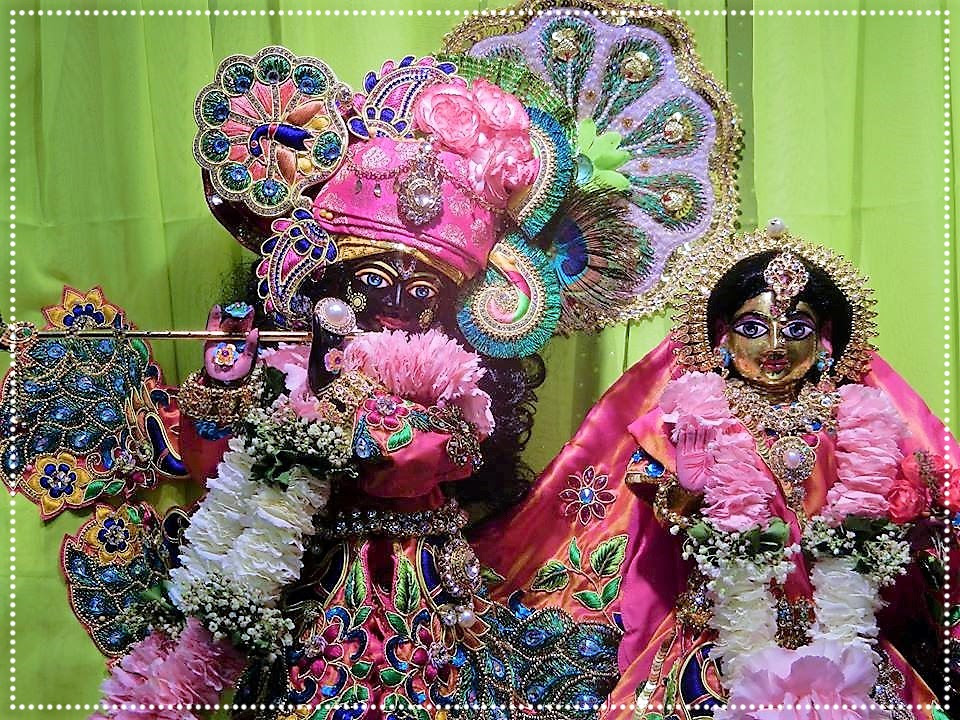
| |||||
Visiting Jaipur with Indradyumna Swami – Kartik Parikrama
→ ISKCON News
Sunrise
→ ISKCON News
The Creator’s Cruelty and the Saints’ Selflessness
→ ISKCON News
Sri Krishna Rasayatra – Mayapur
→ ISKCON News
A special message from Vrindavan Dham (9 min. video)
→ Dandavats

A special message from Vrindavan Dham (9 min. video)
“Vrindavan Dham calls us to give up our false world which is based on the ego, and it invites us to enter the world where Krishna is the center.”
Sundara Bala | The Beautiful Boy | by Mayuri
→ ISKCON News
Gurudev – An Offering To Srila Prabupada | Madhavas Rock Band
→ ISKCON News
TOVP Update November, 2019 – with Sadbhuja das
→ ISKCON News
Jaipur Adventures – part 2 – Braja Parikrama 2019
→ KKSBlog

Written by Rukmini
A change of heart with Śrī Śrī Rādhā-Govindajī
dīvyad-vṛndāraṇya-kalpa-drumādhaḥ-
śrīmad-ratnāgāra-siṁhāsana-sthau
śrīmad-rādhā-śrīla-govinda-devau
preṣṭhālībhiḥ sevyamānau smarāmi
“In a temple of jewels in Vṛndāvana, underneath a desire tree, Śrī Śrī Rādhā-Govinda, served by Their most confidential associates, sit upon an effulgent throne. I offer my humble obeisances unto Them.” (Śrī Caitanya-caritāmṛta Ādi-līlā 1.16)
The delayed darśana of Madana-mohana combined with more encounters with the ‘bus demon’ resulted in us entering Jaipur close to midnight. Our hosts were far from asleep. Mahārāja and the devotees arrived to a shower of rose petals from a spiralling staircase as they entered the Rawla Mrignayani Hotel. It was previously a palace of a minor kṣatriya ruler. In the morning light it revealed itself to be a most charming location, with intricately designed low arches, lavish courtyards, stained glass windows, lampshades and water fountains. It oozed with Jaipur’s rich traditional art, nothing monotone. The lower floors were in full vision of the upper ones making it very homey and you could step out of your room to find Mahārāja and the devotees peacefully chanting in the courtyards in the morning sun. It was a shade heavenly.
The whole town of Jaipur flows to Śrī Śrī Rādhā-Govindajī. They are the hub of all activity and after breakfast we joined the flow. Mahārāja reminded us in Vṛndāvana that Śrī Śrī Rādhā-Govindajī are the original Deities of Rūpa Gosvāmī and as rūpānugas (followers of Rūpa Gosvāmī) Jaipur is our city! The temple is located on grounds belonging to royalty, with lush sprawling gardens just behind. We enter just a couple of hours before the midday darśana, when the Jaipur bazaars close, not for a siesta, but to devotedly set eyes on Rādhā-Govindajī once more. At the temple there is an outer current of people flowing around the Deities in parikramā with an inner space teeming with those eager for darśana. Govindajī is large with intricate designs on His cheeks in orangy-yellow sandalwood and red-rimmed eyes. A golden Śrīmatī Rādhārāṇī stands next to Him with a silver cow behind Them. In brilliant orange and gold, They have definite royal presence. Avoiding the crowds, we settle comfortably in the gardens, our aching bodies (remnants from combat with the bus demon) sinking into the soft, damp grass. “These journeys are lots of ecstasy,” said Mahārāja, “but not much rest.”
He began with a description by Śrīla Kṛṣṇadāsa Kavirāja Gosvāmī of the worship of Śrī Śrī Rādhā-Govindajī when They were in Vṛndāvana. It was the main temple, with thousands of Lord Caitanya’s followers residing nearby. On the highest tower, a lamp was lit every night. In Agra, 60 km away, a notorious mogul ruler, Aurangzeb, saw the glow of Rādhā-Govinda’s supremacy. Burning with envy, he launched an attack on the temple. The Vṛndāvana Vaiṣṇavas, however, had already devised an undercover mission to send Śrī Śrī Rādhā-Govinda to Jaipur for Their protection. Ever since, Vṛndāvana has been trying to get Them back and Jaipur will not give Them. Such is the transcendental Deity wars that exist even today. Rādhā-Govindajī did not come alone; the spirit of Lord Caitanya’s mercy, His teachings and Vaiṣṇava pūjārīs all came with. While Mahārāja spoke, a kind gentlemen approached with a gift of mahā-prasādam laḍḍus in that same spirit of mercy. Laḍḍus are a huge part of Rādhā-Govinda’s mercy. Mahārāja had us buy as much as possible and save some for ‘Ron (‘later on’ in colloquial Australian).

Mahārāja mentioned that Deities are especially powerful when they are installed by one with pure devotion. How can we understand this? Rūpa Gosvāmī’s Bhakti-rasāmṛta-sindhu (our handbook) explains that devotional service is ‘śrī-kṛṣṇākarṣiṇī’, it attracts Kṛṣṇa, therefore the purity and potency of Rūpa Gosvāmī’s devotional service makes Rādhā-Govinda so supremely captivating.
Rūpa Gosvāmī provides us with abhidheya-tattva, or ‘the path to follow’ in devotional service. He teaches us how to simply serve without material desire. Although Sanātana Gosvāmī is elder, Rūpa Gosvāmī is considered senior because he is the rasācārya. At Karauli, Kadamba Kanana Swami mentioned that in sambandha-jñāna (represented by Madana-mohana) we adjust our external behaviour but it is with Rādhā-Govinda that the heart actually changes. Govinda is the instructor (as with Bhagavad-gītā) and He teaches us how to develop our devotional service. When our heart changes, then we may ask, “Material world? I heard it stopped existing. What is there besides our relationship with Govinda?”
The next morning, steady streams of japa filled the quiet Jaipur streets, as a group of eager beavers trekked to the Govindajī temple for maṅgala-ārati. The temple was alive, brimming with locals who stop by before work, and yet it was peaceful in its fullness. It felt otherworldly. Gentle but potent chants of “Rādhe Govinda, Rādhe Govinda” saturate the atmosphere and role off our tongues effortlessly. A whole city of voices united in devotion. Seeing Govindajī standing in the sweet simplicity of His night dress is mind-blowing. His cheeks, now smooth and bare, give emphasis to His eyes. They penetrate into our souls, pulling us closer and mystically we find ourselves right in front of Him.
Oh Govindajī, we offer our words, our possessions, our energy and our intelligence. Please accept us and flood our lives with Your service. We, Kali-yuga pilgrims, place our faulty hearts at your feet; may you edit as needed and infuse within them the spirit of devotion.
The article " Jaipur Adventures – part 2 – Braja Parikrama 2019 " was published on KKSBlog.
Prayers request for HG Virabahu Das
→ Dandavats

Prayers request for HG Virabahu Das.
Hare Krishna. We are requesting your prayers and well-wishes for a senior disciple of Srila Prabhupada, His Grace Virabahu Das, an initiating ISKCON Guru and member of the Governing Body of Commissioners (GBC). Virabahu Prabhu recently had an elective surgery at the Bhaktivedanta Hospital in Mumbai, India. Kindly keep him in your prayers to the Lord so he can have a speedy recovery and can return to his devotional service very soon. Thank you very much.
Chastened and Humbled
Giriraj Swami
 Listening to Srila Prabhupada’s talk on Srimad-Bhagavatam 3.25.35, given in Bombay on December 4, 1974, I felt chastened and humbled by his description of surrender and pure devotion, as exemplified by Sri Prahlada:
Listening to Srila Prabhupada’s talk on Srimad-Bhagavatam 3.25.35, given in Bombay on December 4, 1974, I felt chastened and humbled by his description of surrender and pure devotion, as exemplified by Sri Prahlada:
“Krishna says (Gita 18.66),
sarva-dharman parityajya
mam ekam saranam vraja
aham tvam sarva-papebhyo
moksayisyami ma sucah
[Abandon all varieties of religion and just surrender unto Me. I shall deliver you from all sinful reaction. Do not fear.] The qualification is: unless one is sinless, he cannot understand Krishna. He cannot understand what is krsna-bhajana. But if one is eager—actually very eager—he can do it immediately. What is that? Surrender to Krishna. Sarva-dharman parityajya: give up all these nonsense so-called religious principles. Simply surrender to Krishna: ‘Krishna, I had forgotten about You. Now I surrender unto You fully. If You like, You can kill me; if You like, You can give me protection.’ This is surrender—not business: ‘Krishna, if You give me this nice thing, then I will surrender.’ That is not surrender. That is business.
“When Prahlada Maharaja was offered the benediction that ‘My dear Prahlada, you have suffered so much for Me, even from your father. Now your enemies are all off. You can ask any benediction you like,’ Prahlada Maharaja said, ‘What is this, my dear Lord? Am I a baniya, vanik, that because I have suffered for You, I shall ask some benediction? No, no, don’t offer me like that. Because You are the supreme powerful, whatever I want, I can get from You. I am born in an asura family; I am inclined to material enjoyment. So don’t delude me, my dear Sir. And why shall I ask You? I have seen my father, so powerful that even the demigods were afraid of him, and You finished all his power within a second. So why shall I ask for these things? Kindly engage me in the service of Your servant. This much I want. I don’t want anything else.’
“Therefore a devotee never asks anything material from the Supreme Personality. As Chaitanya Mahaprabhu has taught us, na dhanam na janam na sundarim kavitam va jagad-isa kamaye (Siksastaka 4). [O Lord of the universe, I do not desire material wealth, materialistic followers, a beautiful wife or fruitive activities described in flowery language. All I want, life after life, is unmotivated devotional service to You.] They are simply satisfied by glorifying the Lord. That is their only satisfaction. If they get the opportunity of glorifying the Lord, as it is said in the previous verse, sabhajayante mama paurusani. Mama paurusani—the glorious activities of the Lord. This is the way of bhajana. Satatam kirtayanto mam yatantas ca drdha-vratah (Gita 9.14). [Always chanting My glories, endeavoring with great determination, bowing down before Me, these great souls perpetually worship Me with devotion.]
“This is the way of bhakti-yoga. Simply glorify . . . Krishna therefore comes to give advantage to the devotees for glorifying Him—because He acts. Paritranaya sadhunam vinasaya ca duskrtam (Gita 4.8). [In order to deliver the pious and to annihilate the miscreants, as well as to reestablish the principles of religion, I advent Myself millennium after millennium.] To kill the demons and to give protection to the sadhus, He has to work.”
Srila Prabhupada has kindly taught us the standard of surrender, of pure devotional service. I simply pray to come to that standard, by his grace, as he wanted—unqualified as I am.
Hare Krishna.
Yours in service,
Giriraj Swami
A Spiritual Interview with His Grace Kripamoya Das (video)
→ Dandavats

A Spiritual Interview with His Grace Kripamoya Das (video)
A very insightful interview into Krishna Consciousness, graciously given to us by Kripamoya Das. We explore many things in this interview (which had to be broken into two videos). Including; gaining His Divine Grace A.C Bhaktivedanta Swami Prabhupada’s association, what his journey was like, how chanting is a form of yoga, the controversiality of religion in general. And many other interesting things! So stay till the end to get a new view on what religion entails :)
The Power and Glory of the Holy Name
→ Dandavats

“Ajamila never meant to chant the name of Narayana actually, but he was calling his son, whose name was Narayana. That means it was almost neglectfully done. So, even when neglectfully chanted, the holy name has got so much power, and what to speak of when those who are very faithfully chanting, observing the rules and regulations without any offense—what to speak of them? That is the thing.
Read More...Jaipur Adventues- part 1 – Braja Parikrama 2019
→ KKSBlog

Written by Rukmini
Searching for the Enchanter (Karauli)
jayatāṁ suratau paṅgor
mama manda-mater gatī
mat-sarvasva-padāmbhojau
rādhā-madana-mohanau
“Glory to the all-merciful Rādhā and Madana-mohana! I am lame and ill advised, yet They are my directors, and Their lotus feet are everything to me.” (Śrī Caitanya-caritāmṛta Ādi-līlā 1.15) “The reason why we have come here,” said Mahārāja at the Madana-mohana temple in Vṛndāvana,” is to evoke a desire to go to Karauli. Madana-mohana is the attractor of Cupid and He can take away our material attraction. They say the roads are better these days. They used to look like the ocean (hills like waves). Madana-mohana is on one such hill; pay the price and get the mercy or stay at home safe in bed!” It was early morning, just after maṅgala-ārati, when the roll of suitcases echoed in the Vṛndāvana streets. All the parikramās thus far were layered with meditations preparing us for the Jaipur trip and the air was abuzz. Passport and visa check? We are ready for the mercy. Or so we thought we were. “Everyone is equal,” to quote Orwell, “but some have better bus karma than others,” said Mahārāja.
On a gentle incline bus two stalled. We were out on the smoky streets. There were two options: wait for another bus that would come in the proverbial “half hour” and potentially miss the darśana of Madana-mohana or… We piled into the three, already full, buses behind us. Some stood in the aisles freezing under the AC. Some sat on the engine next to driver, roasting from the feet up. Others sat behind the driver and in brace position, should the bus brake quickly and send them careening through the windscreen. And still others squeezed too many into seats too few. Whatever the case, we were not giving up on Karauli. In the meantime, Mahārāja’s bus arrived on schedule; fortune favours the holy. They lined the streets of Karauli with harināma and sat in patient kīrtana in front of Śrī Śrī Madana-mohana, the original Deities of Sanātana Gosvāmī. Five hours after originally embarking, the remaining buses arrived. Joyous to finally reach Karauli soil, we spilled into the temple room at the peak of the kīrtana…
“Śrī Govinda, Gopīnātha, Madana-mohana” Twirling across the marble floor, and bouncing off the quaint, artistically designed walls, we called from our depths… “Madana-mohana, Madana-mohana.” …And the kīrtana raged on for a glorious hour. “Welcome to Karauli, said Mahārāja, “Welcome to the lotus feet of Madana-mohana” But we had missed the darśana. “Darśana is more than seeing Kṛṣṇa,” he later mentioned, “because Kṛṣṇa sees us.” With His super-vision, would Śrī Śrī Madana-mohana see us from behind the large steely doors? The Karauli Vaiṣṇavas served us a lunch topped with piping hot purīs and mahā-prasādam. We rolled back into the temple room to hear Mahārāja’s final decision: we would all wait for 2.5 hours to allow everyone the sacred and rare darśana of Madana-mohana, potentially a once-in- a-lifetime event. By the mercy of the Vaiṣṇava a blind man is allowed to see.

Promptly, Mahārāja whisked us away on the magic carpet of the Bṛhad-bhāgavatāmṛta to all corners of the universe in search of the most glorious devotee – not with Aladdin, but Nārada Muni. Nārada approached a brāhmaṇa in Prayāga who sent him to a King in South India, who sent him to Lord Śiva… Although all were exalted Vaiṣṇavas, each expressed an increasing degree of intimacy so the search continued. When meeting Śrī Prahlāda, upon whose head Nṛsiṁhadeva placed His lotus hand and licked his entire body, Nārada did not want to leave. He had been cursed by Dakṣa, however, to never be able to stay in one place. Śrīla Prabhupāda said that through the parents of his disciples, he inherited Nārada’s curse and he passed it on to his sannyāsīs. “I too cannot stay in one place,” said Mahārāja “but I came up with a plan. I want to take you all with me, so that we can go from place to place together.” Later in Jaipur, Mahārāja described how with the Bṛhad-bhāgavatāmṛta, Sanātana Gosvāmī puts a lens on Kṛṣṇa and adjusts the focus such that we ask, “What is the goal?” This is the essence of sambandha-tattva (making a connection with Kṛṣṇa) established by Sanātana Gosvāmī in his books as well as by his Deity. Madana-mohana attracts people away from Māyā. Often spiritual life feels like we have to keep pushing ourselves to keep up principles and practices but we can approach Madana-mohana so we can be pulled ahead instead.
How to approach Madana-mohana? We can only do so by the mercy of Sanātana Gosvāmī. We took shelter of the Ṣaḍ-gosvāmy-aṣṭakam, meditating on the qualities of the Gosvāmīs through each curvy meter. As oceans of Kṛṣṇa-prema and being non-envious by nature, they were loved by all. They chanted and danced in ecstasy, studied śāstra scrutinizingly, lived simply and have the ability to purify all conditioned souls. Upon Mahārāja’s instruction we stood pressed against the gates for 45 minutes awaiting darśana, unwilling to be pushed away by any of the locals. Conches blew, curtains swished open to reveal the glossy black marble form of Śrī Śrī Madana-mohana with kind eyes and a welcoming, playful smile. With proportionately the largest lotus feet I’ve ever seen, surely there was shelter enough for us all in its reddish tinge. Oh Madana-mohana, may your flower arrows of divine attraction pierce our hearts and pull us to Your lotus feet. May they attract us with such force that our eyes and minds never shift to the temporary. May we in turn become attractive, assisting the mission of the Gosvāmīs to attract others to You.
The article " Jaipur Adventues- part 1 – Braja Parikrama 2019 " was published on KKSBlog.
Gaura Purnima 2020 Festival Schedule
→ Mayapur.com
Welcome to Mayapur Gaura Purnima Festival 2020. For guest house bookings, please write to mghb108@gmail.com. To take part in festival sponsorships, please write to info@mayapur.com To take part in Navadvipa Mandala Parikrama, please visit navadvipaparikrama.com Gaura Purnima Festival Schedule – 2020 17.02.2020 – Devotees Arrival 18.02.2020 to 21.02.2020 – Sravana Utsav Mela 22.02.2020 – Flag […]
The post Gaura Purnima 2020 Festival Schedule appeared first on Mayapur.com.
Darshan of the original Vrinda devi (Album of photos)
→ Dandavats

Darshan of the original Vrinda devi (Album of photos)
Bhakti Chaitanya Swami: On the 11th we went to Kamyavan and had darshan of the original Vrinda devi. We also slid on Krishna’s slide and went to a number of other places.
Rasa Purnima Darshan and Karttika Vandanam (2019) (Album of photos)
→ Dandavats

Rasa Purnima Darshan and Karttika Vandanam (2019) (Album of photos)
Please take Rasa Purnima darshan of the most astounding Deities of ISKCON Vrindavan, Sri Sri Krishna Balaram Mandir, and also the 15th Annual Karttika Vandanam, where the devotees offered their talents as a garland of prayers at the lotus feet of Their Lordships and Srila Prabhupada
Jahnavi Harrison Live – New York City Concert 11/16
→ ISKCON News

Grammy Nominee, Jahnavi Harrison gives a live concert at an evening of devotional song and divine mantra that will transport the audience to the sacred space within — where beauty resides, where songs of love echo eternal and where every step is a dance. Saturday, November 16, 7:30pm – 9:30pm, the Angel Orensanz Foundation, 172 Norfolk Street. New York, NY 10002.
Tickets: http://bhakticenter.org/jahnavi-harrison-concert/ (Use the code “mantra” with friends to save 10%)
The Power and Glory of the Holy Name
Giriraj Swami
 Today I heard a wonderful talk in which Srila Prabhupada—and Srimad-Bhagavatam—glorified the chanting of the holy names. I was present when Srila Prabhupada gave the talk at the Ardha-kumbha-mela in Allahabad on January 31, 1971.
Today I heard a wonderful talk in which Srila Prabhupada—and Srimad-Bhagavatam—glorified the chanting of the holy names. I was present when Srila Prabhupada gave the talk at the Ardha-kumbha-mela in Allahabad on January 31, 1971.
Srila Prabhupada said, “The conclusion is:
na vai sa narakam yati
neksito yama-kinkaraih
yady apy amangalo martyo
visnu-loke mahiyate
[SB 6.2.48]
[‘Because this very confidential historical narration has the potency to vanquish all sinful reactions, one who hears or describes it with faith and devotion is no longer doomed to hellish life, regardless of his having a material body and regardless of how sinful he may have been. Indeed, the Yamadutas, who carry out the orders of Yamaraja, do not approach him even to see him. After giving up his body, he returns home, back to Godhead, where he is very respectfully received and worshiped.’] One who is engaged in chanting the holy name—for him this is the special facility. What is that? It is guaranteed that he’ll never go to the hellish condition of life. That is guaranteed. He will not be degraded to the lowest stages of life, animal life or a life of ignorance in a lowborn of human life, but he will gradually make progress. And it is also guaranteed that the Yamadutas, the servants of Yamaraja, will never come to see him, or he will never see them. They will be out of sight. This is the result. And yajnati ananyalo mattah: although this material existence is always inauspicious, a person engaged in chanting the holy names always lives in the Vishnu-loka. He’s not in this material world. If you chant without offense, yatra ananyalo mad-bhakta tatra tisthami, immediately you create a Vaikuntha-loka, because Krishna comes.”
Here Srila Prabhupada was referring to a verse in the Padma Purana:
naham tisthami vaikunthe
yoginam hrdayesu va
yatra gayanti mad-bhaktah
tatra tisthami narada
“My dear Narada, I do not dwell in Vaikuntha or in the hearts of the yogis; I remain wherever My devotees sing My glories.”
“When Krishna comes, Vishnu comes,” Prabhupada continued. “Wherever Krishna goes, that is Vaikuntha. . . . There is no difference between the holy name and Krishna. And Krishna says, ‘I live there where My pure devotees are chanting.’ So, when Krishna comes, when Krishna is on your tongue, how you can live in this material world? It is already Vaikuntha, provided your chanting is offenseless.
“In the beginning it may not be offenseless; still, the chanting has got so much power. Krsna-karsini. There are several qualifications of devotional service; one of them is krsna-karsini: attracting Krishna. Krishna attracts everyone, but devotional service attracts Krishna.
mriyamano harer nama
grnan putropacaritam
ajamilo ’py agad dhama
kim uta sraddhaya grnan
[SB 6.2.49]
[‘While suffering at the time of death, Ajamila chanted the holy name of the Lord, and although the chanting was directed toward his son, he nevertheless returned home, back to Godhead. Therefore if one faithfully and inoffensively chants the holy name of the Lord, where is the doubt that he will return to Godhead?’] This is the last conclusion, that Ajamila actually did not mean to chant the holy name of the Supreme Personality of Godhead, but some way or other his son’s name was Narayana, and he called his son. The name is so powerful that even without aiming or intending to address the Supreme Personality of Godhead, because the name was there, therefore ajamilo ’py agad dhamam: he was promoted to the spiritual kingdom. Kim uta sraddhaya grnan: then what to speak of such persons who are actually trying to chant the holy name without any offense.
“Ajamila never meant to chant the name of Narayana actually, but he was calling his son, whose name was Narayana. That means it was almost neglectfully done. So, even when neglectfully chanted, the holy name has got so much power, and what to speak of when those who are very faithfully chanting, observing the rules and regulations without any offense—what to speak of them? That is the thing.
“A similar instance is there in the Nrsimha Purana: a boar attacked a mlechchha, a lowborn meat-eater. They hate the hog. They call it haram. Haram means ‘abominable.’ So, one boar attacked him, and while he was dying he called this abominable, ‘haram, haram’; ha rama means ‘O Rama.’ So although he did not mean it, it became ‘O Rama,’ and he was immediately promoted to the spiritual kingdom. So, that is the power of chanting the Hare Krishna mantra.”
Hare Krishna.
Yours in service,
Giriraj Swami
The Forest Of Playful Pastimes (Album of photos)
Indradyumna…
→ Dandavats

The Forest Of Playful Pastimes (Album of photos)
Indradyumna Swami: The other day we visited Enca Gaon in the forest of Khelanvana in Vrindavan. It was there that Lord Balarama pulled the Yamuna towards Him with His plow. Later He danced with His group of gopis in the scenic beauty of the Khelanvana forest. Khelanvana means the “forest of playful pastimes.“
Find them here: http://bit.ly/2NK0vyd
Passersby Offer Lamps to Lord Damodara in New York City Subway Stations (2 min. video)
→ Dandavats

Passersby Offer Lamps to Lord Damodara in New York City Subway Stations (2 min. video)
The month of Karttika comes to a close, and the last few people offer lamps to Lord Damodara this year, getting heaps of spiritual credits by doing so. Yuga Dharma Ashram devotees encourage passersby to offer lamps to Lord Damodara in New York City subway stations. November 2019.
Katyayani Vrata
→ Dandavats

Katyayani Vrata.
All the unmarried gopīs in Vṛndāvana used to daily worship goddess Kātyāyanī early in the morning after taking a bath in the river Yamunā. Kātyāyanī is another name for goddess Durgā.
Sourdough bread workshop (video)
→ Dandavats

Sourdough bread workshop (video)
Madan Gopal Das shares his expertise in baking fresh sourdough bread with the devotees at ISKCON New York
Read More...
Introductory Handbook For Krsna Consciousness
→ Dandavats
 By Rohininandana das
By Rohininandana das This handbook and accompanying curriculum, which are to be used enjointly, have been compiled under the direct order of the Governing Body Commission of the International Society for Krsna Consciousness. Their contents are based wholely on the inspiration, guidance and wisdom of His Divine Grace A.C. Bhaktivedanta Swami, the founder acarya of ISKCON. This humble attempt has been made in the service of any aspiring devotee and future disciple of the authorised ISKCON Acaryas. We pray to Srila Prabhupada, Srila Bhaktisiddhanta and Srila Rupa Gosvami that this work may be strictly in the line of the parampara and full of transcendental potency for the eternal benefit of one who makes use of it. Continue reading "Introductory Handbook For Krsna Consciousness
→ Dandavats"
Katyayani Vrata
→ Ramai Swami
All the unmarried gopīs in Vṛndāvana used to daily worship goddess Kātyāyanī early in the morning after taking a bath in the river Yamunā. Kātyāyanī is another name for goddess Durgā.
The goddess is worshiped by preparing a doll made of sand from the bank of the Yamunā. The gopīs used to prepare the deity of goddess Durgā and worship it with candana pulp, garlands, incense, lamps and all kinds of presentations—fruits, grain and twigs of plants.
The unmarried girls used to pray with great devotion to goddess Kātyāyanī, addressing her as follows: “O supreme external energy of the Personality of Godhead, O supreme mystic power, O supreme controller of this material world, O goddess, please be kind to us and arrange for our marriage with the son of Nanda Mahārāja, Kṛṣṇa.”
From Krsna Book by His Divine grace A.C. Bhaktivedanta Swami Prabhupada.
Harinama Sankirtan in Vina del Mar, Chile (Album of photos)
→ Dandavats

Harinama Sankirtan in Vina del Mar, Chile (Album of photos)
Srila Prabhupada: Oh, how glorious are they whose tongues are chanting Your holy name! Even if born in the families of dog-eaters, such persons are worshipable. Persons who chant the holy name of Your Lordship must have executed all kinds of austerities and fire sacrifices and achieved all the good manners of the Aryans. To be chanting the holy name of Your Lordship, they must have bathed at holy places of pilgrimage, studied the Vedas and fulfilled everything required. No one in this life can chant the holy name of the Lord unless he has passed all lower stages, such as performing the Vedic ritualistic sacrifices, studying the Vedas and practicing good behavior like that of the Aryans. All this must first have been done. Just as a student in a law class is to be understood to have already graduated from general education, anyone who is engaged in the chanting of the holy name of the Lord must have already passed all lower stages. (Srimad-Bhagavatam 3.33.7 Purport)
Day 11 – Braja Parikrama 2019
→ KKSBlog

Kamyavan, Varsana, Sri Ji, Pili Pokhar
Day 11 welcomes new family members to the growing Kadamba Kanana Swami with initiations at Varsana, a visit to Prem Sarovar and Pili Pokhar.
Videos
If you cannot see the videos below visit our youtube channel. Dont forget to subscribe!
Initiations at Varsana
Pili Pokhar
Photos
Photos by Svasti-Gopinatha, Tamala Krsna, Gauravani, Padmanabha, Zoltan, Gopali, Tamala Krsna, Tattva Darsana and others
Braja Parikrama 2019 Schedule
- 1st Nov – Govinda kund, Tribhuvanatha Samadhi, Nrsimha temple Puncari
- 2nd Nov – Gosvami Temples Vrindavana
- 3-5 Nov Jaipur
- 6th Nov – Yavat, Vrindakund
- 7th Nov – Sanket, Anjanoka
- 8th Nov – Vrindavan Parikrama
- 9th Nov – Unchagaon
- 10th Nov – Rest
- 11th Nov – Kamyavan
- 12th Nov – Garuda Govinda, Rama Tala
The article " Day 11 – Braja Parikrama 2019 " was published on KKSBlog.
Day 12 – Braja Parikrama 2019
→ KKSBlog

Garuda Govinda and Rama Tala
Our last day brings us to Bahulavana, Garuda Govinda and Rama tala and unfortunately concludes the Braja Parikrama 2019. Stay tuned for more articles on the Braja Parikrama with some exciting videos in the works!
See you next year @2020 !
Videos
If you cannot see the videos below visit our youtube channel. Dont forget to subscribe!
Bahulavana
Rama Tala
Photos
Photos by Svasti-Gopinatha, Tamala Krsna, Gauravani, Padmanabha, Zoltan, Gopali, Tamala Krsna, Tattva Darsana and others
Braja Parikrama 2019 Schedule
- 1st Nov – Govinda kund, Tribhuvanatha Samadhi, Nrsimha temple Puncari
- 2nd Nov – Gosvami Temples Vrindavana
- 3-5 Nov Jaipur
- 6th Nov – Yavat, Vrindakund
- 7th Nov – Sanket, Anjanoka
- 8th Nov – Vrindavan Parikrama
- 9th Nov – Unchagaon
- 10th Nov – Rest
- 11th Nov – Kamyavan
- 12th Nov – Garuda Govinda, Rama Tala
The article " Day 12 – Braja Parikrama 2019 " was published on KKSBlog.
Preparing for the book distribution marathon!
→ Dandavats

HH Kavicandra Swami is preparing for the book distribution marathon!
ISKCON Ganga Sagar facilities were heavily affected by cyclonic storm Bulbul
→ Dandavats

Severe cyclonic storm Bulbul accompanied by heavy rain lashed the Ganga Sagar shore, villages and beaches. ISKCON Ganga Sagar buildings were also heavily affected by 130KMPH wind speed. Some of the roofs were destroyed and several trees were completely uprooted. No devotee was harmed.
Visit to Radha Kunda (15 min. video)
→ Dandavats

Visit to Radha Kunda (15 min. video)
Indradyumna Swami: The Most Sacred Place - Radha Kunda!
A few days ago our parikrama party visited Radha Kunda, the most sacred place in the universe. We approached Srimati Radharani’s kunda with all the humility we could muster and bathed in the sacred waters. We also listened to a discourse on Radha Kunda’s glories and relished kirtan and prasadam afterwards.
Sri Krishna Rasayatra – Nothing Else but the Pleasure of the Lord
→ Mayapur.com
bhagavan api ta ratrih saradotphulla-mallikah viksy- arantum manas cakre yoga-mayam upasritah Sri Kṛṣṇa is the Supreme Personality of Godhead, full in all opulences, yet upon seeing those autumn nights scented with blossoming jasmine flowers, He turned His mind toward loving affairs. To fulfill His purposes He employed His internal potency. – S.B 10.29.1 On this […]
The post Sri Krishna Rasayatra – Nothing Else but the Pleasure of the Lord appeared first on Mayapur.com.






 Utpanna Ekadasi
Utpanna Ekadasi